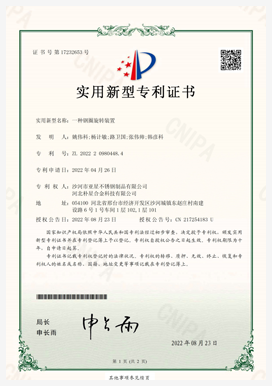Innovations in Corn Harvesting Technology for Improved Efficiency and Sustainability
The Evolution of Maize Harvesters A Technological Triumph
The world of agriculture has witnessed remarkable transformations over the decades, and one of the most significant advancements has been in the technology used for harvesting crops. Among the various agricultural machinery that has evolved, the maize harvester stands out as a pivotal innovation that has changed the landscape of farming. This article delves into the development of maize harvesters, examining their history, technology, and impact on agriculture.
The Historical Context
Maize, also known as corn, is one of the most widely cultivated crops globally, integral to both food supply and economic stability. Historically, maize harvesting was a labor-intensive process, requiring hundreds of workers during the peak harvest season. Manual labor methods, including hand-picking and the use of simple tools like sickles, were common until the mid-20th century. The need for more efficient and less labor-intensive methods sparked the development of mechanized harvesters.
The first maize harvesters emerged in the 1930s, originally designed as simple, often cumbersome machines that could streamline the collection of maize. These initial designs paved the way for more sophisticated models. Manufacturers began to incorporate features that not only improved efficiency but also reduced crop damage during harvesting.
Technological Advancements
The evolution of the maize harvester is a testament to technological progress. The introduction of combine harvesters in the 1950s revolutionized the crop harvesting process. These powerful machines allowed for the simultaneous cutting, threshing, and cleaning of maize, drastically reducing the time and labor required for harvest. The integration of technology such as GPS and precision agriculture has further enhanced the efficiency of maize harvesting.
Today’s advanced maize harvesters are equipped with various sophisticated features. For instance, modern machines utilize sensors and imaging technology to assess the field conditions and optimize their operations. They can adjust their speed and harvesting techniques based on real-time data, thus maximizing yield while minimizing waste. Additionally, modern harvesters are designed with efficient grain handling systems that reduce the loss of grain during collection.
maize harvester

Environmental Considerations
As agricultural practices evolve, there is an increasing emphasis on sustainability and environmental stewardship. Maize harvesting technology has adapted to these concerns by enabling farmers to operate in more eco-friendly ways. For example, many modern harvesters are equipped with technologies that minimize soil compaction and preserve the organic structure of the soil. This is crucial for maintaining soil health and ensuring that farmland remains productive for future generations.
Moreover, with the rise of precision farming techniques, farmers can now utilize data analytics to make informed decisions about when and how to harvest. This not only enhances efficiency but also reduces the ecological footprint of farming practices. Farmers can optimize their use of resources, such as water and fertilizers, aligning with growing environmental standards.
Economic Impact
The impact of maize harvesters extends beyond the field; it influences local economies and global markets. Efficient harvesting translates directly to higher yields and, subsequently, increased revenue for farmers. This is particularly crucial in developing countries, where maize is a staple food crop and a key source of income for millions. The adoption of advanced harvesting technology can significantly improve food security and economic stability in these regions.
Furthermore, as the demand for maize continues to rise due to its versatile applications in food products, animal feed, and biofuels, the efficiency of harvesting becomes even more critical. This demand drives innovation in harvesting technology, further enhancing the productivity of the agricultural sector.
Conclusion
In conclusion, maize harvesters have come a long way from their rudimentary origins to the sophisticated machines of today. They represent a critical intersection of technology, agricultural efficiency, and economic empowerment. As we look to the future, the ongoing innovation in maize harvesting technology promises to play an essential role in meeting the global challenges of food production, sustainability, and economic resilience. The journey of the maize harvester reflects not only the advances in machinery but also the enduring spirit of agricultural innovation that continues to transform the way we cultivate the land.
Latest news
-
When to Upgrade Your Old Forage HarvesterNewsJun.05,2025
-
One Forage Harvester for All Your NeedsNewsJun.05,2025
-
Mastering the Grass Reaper MachineNewsJun.05,2025
-
How Small Farms Make Full Use of Wheat ReaperNewsJun.05,2025
-
Harvesting Wheat the Easy Way: Use a Mini Tractor ReaperNewsJun.05,2025
-
Growing Demand for the Mini Tractor Reaper in AsiaNewsJun.05,2025







